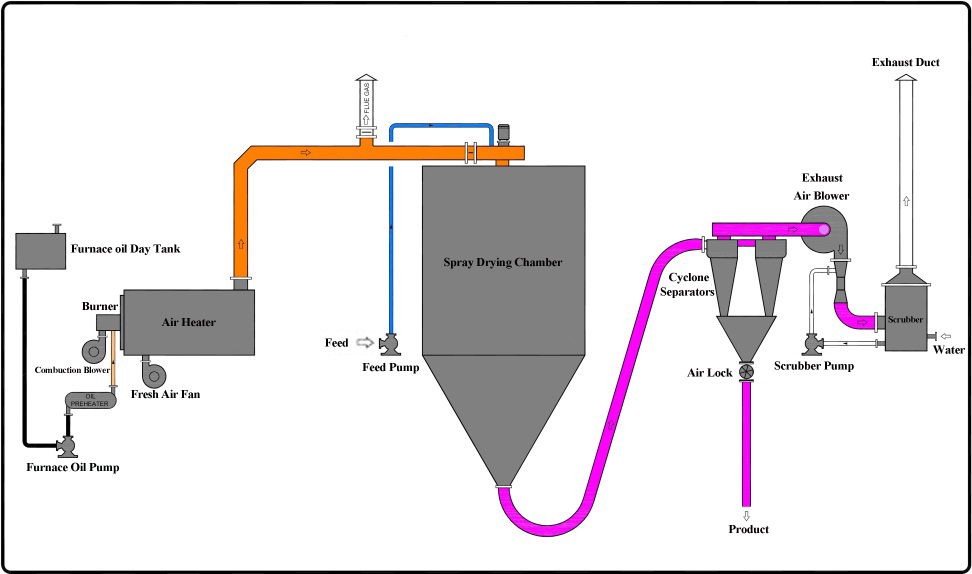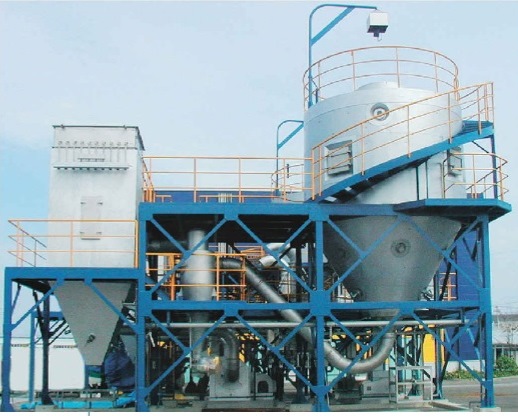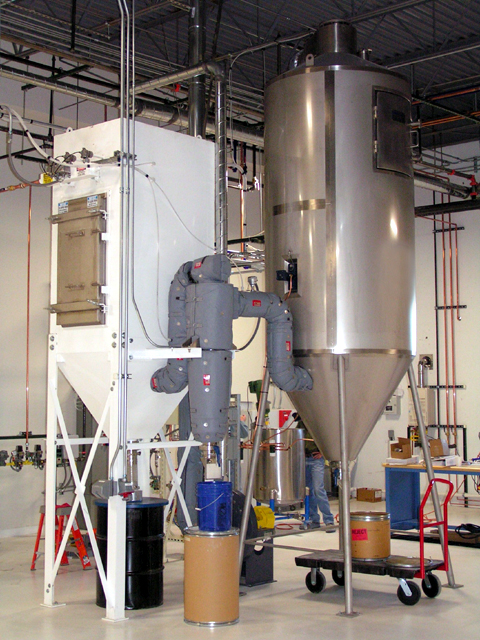Spray Dryer
Spray drying can be used in a wide range of applications where the production of a free-flowing powder is required. Almost all other methods of drying, including use of ovens, freeze dryers or rotary evaporators, produce a mass of material requiring further processing (e.g. grinding and filtering) therefore, producing particles of irregular size and shape. Spray drying on the other hand, offers a very flexible control over powder particle properties such as density, size, flow characteristics and moisture content.

Flow Diagram


Features :
- Spray drying system is simpler than other drying methods since the powder is available directly from liquid material (solution or suspension).
- By atomizing the liquid, surface area per unit weight increases, thus higher efficiency forcontacting to hot air is achieved and drying process can be carried in a shorter time.
- Due to the latent heat of evaporation, surrounding fine powder during the process will not be at a high temperature.This system is therefore suitable for material that is vulnerable to heat.
- As the atomized liquid becomes spherical due to surface tension, the dried powder also does.
Advantages :
- The dry particle size can be easily controlled by atomization of the liquid feed and the design of the hot gas inlet.
- The shape of most spray dried particles is spherical, which provides for fluid-like flow properties.
- Spray drying produces the most homogeneous product for multi-component solutions and slurries.
- The heat and mass transfer during drying occurs in the air and vapor films surrounding the droplet.
- The surface area produced by atomization of the liquid feed enables a short gas residence time.
- Because a spray dryer is a gas suspended process, the dryer chamber remains dry by design.
Applications :
- Food: milk powder, coffee, tea, eggs, cereal, spices, flavorings, starch and starch derivatives, vitamins, enzymes, stevia, colourings, etc.
- Pharmaceutical: antibiotics, medical ingredients, additives
- Industrial: paint pigments, ceramic materials, catalyst supports, microalgae
- Bone and tooth amalgams
- Beverages
- Flavours, colourings and plant extracts
- Plastics, polymers and resins
- Soaps and detergents
- Textiles and many more
